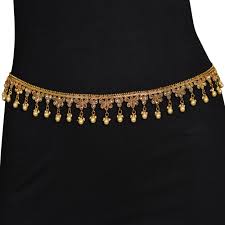Uttarakhand Culture
Uttarakhand is a culturally colourful society which is divided into two major regions of Garhwal and Kumaon. The religious, social and cultural urges of the people of Uttarakhand find an expression in various fairs and festivals, which are in turn closely linked to the social and economic activities of the region.
The culture identifies its people uniquely and gives them a meaning. The various traditions, religions, fairs, festivals, folk dances, music are what distinctly separate them from the rest of the crowd. The residents of Uttarakhand are proud of the culture that they follow. The beauty of the state of Uttarakhand is that it houses people belonging to several sub-groups and ethnic groups together under one roof. This article talks about the culture, beliefs and traditions which bind the people of Uttarakhand together.
Religion
A major section of the people in Uttarakhand are Hindus. However, the state maintains a secular ambience with significant number of people belonging to other faiths like Islam, Sikhism, Buddhism and Christianity.
Art & Craft
The land of Uttarakhand is full of artisans and variety of art and craft. Both the rural and urban people indulge in producing/manufacturing some incredible crafts that are worth witnessing. Woodwork is a significant art form that the locals of Uttarakhand practise, apart from it, paintings from Garhwal School of Paintings and murals like Aipan demonstrate skills of the natives. The Ringaal Handicraft that is practised by a backward community named the same, is quite appreciable. The Rambaan Handicraft done by using Jute and Hemp also reflects the rich art and craft of Uttarakhand. Apart from it the woollen knitted wear and embroidered cushion covers, carpets, bedsheets and curtains by the rural women or urban women groups are a must buy from Uttarakhand. The candle making skills in the state are also at par excellence, there is an entire market in Nainital that is dedicated to this art.
Lifestyle
The lifestyle in Uttarakhand is heterogenous and one can mark the difference between the urban and rural life in the state. Since Uttarakhand comprises of both hilly and plain terrains that eventually demarcate the lifestyle in the state, and then there are areas in the hill that are remote and difficult to access, where obviously the way of life is entirely different. The urban areas like Dehradun, Nainital, Haldwani, Haridwar and a few others enjoy access to most of the modern facilities like top notch schools, hotels, shopping areas and restaurants with better job offers and economic status. The people are often seen engrossed in trying out the new technology, building better infrastructure and also working towards social reforms. Whereas, in the rural areas, life moves at its own pace, women here are seen taking care of their household as well as the agricultural work and collecting of woods from the forest. With the interference of NGOs and Government aid, many rural areas in Uttarakhand are making their living by selling organic products, handicrafts and homestays. While the urban people in Uttarakhand entertain themselves by going to the cinema or watching tv or indulging in modern sports, the rural gentry still enjoys organizing fairs, performing folk dance and devoting time in traditional art and craft.
Source of Economy
Uttarakhand is largely dependent on its agriculture for the revenue. Basmati rice, wheat, soybeans, groundnuts, coarse cereals, pulses, and oil seeds are the most widely grown crops in the state. There are also fruits like apples, oranges, pears, peaches, litchis, and plums that are widely grown in the state and bring a good amount of revenue. Other key industries for the source of economy include tourism and hydropower, and recently development in IT, ITES, biotechnology, pharmaceuticals, and automobile industries can also be seen in the state.
Dresses & Costumes
The traditional dress for women in Uttarakhand remains Sarong, a mantle-type dress, tightened with a blouse and an Odani and Khorpi. Whereas in the weddings or special occasion, native women are seen wearing the attractive Rangwali Pichora or Ghagra Choli. A significantly large nose ring (nath) and necklace called Galoband are also worn by the women during festivals/special occasion. The Rangwali Pichora is the dress worn by married women as it represents prosperity. There is also a region wise dress demarcation, in Garhwal Region, the tribal women living in the upper ranges of Uttarkashi and Chamoli wear warm woollens while those in lower regions or valleys can be seen wearing cotton clothes. The Rajput women of the region wear woollen garments made of Angora for most part of the year along with cotton Pagras and colourful Lehengas with silver necklace.
The Garhwali men wear Kurta Pyjama or Kurta dhoti and tie a turban specially in the colder months. They can also be seen wearing long necklaces made of silver and kadas on their hands. In Kumaon Region, the dresses are slightly different for women and so is the choice of colours. Ladies in Kumaon also have a different neck piece called Hansuli. Kumaoni men can be seen wearing same Kurta and Dhoti like the Garhwali men but they seem to be more fond of jewellery and often seen wearing a variety of it in neck and hands. There are different dresses of Jaunsari and Bhotiya tribes in the state. However, in the recent time, the people in Uttarakhand for daily life wear the modern jeans/trousers and t-shirt/shirt irrespective of gender. The women can also be seen in sarees and ladies suit.
Uttarakhand is blessed with a rich Pahari culture. Folk dance and music play a huge part in enriching the culture. Major hindu aswell as some pahari festivals are celebrated here with enormous joy. There are many delicious local delicacies which one can enjoy seasonally.
Garhwali clothing is made from thick material of vibrant colors, the material is kept thick in order to prevent from harsh cold of himalyas.
Traditional dress for Men
Men wear kurta and payjama which is accompanied by a koti (a woolen coat). they also wear a pahari hat and jewellery on their neck and wrist as accessories.
Traditional dress for women
Women in the pithoragarh district wear saree. But their saree is tied differently, the pallu goes around the waist in order to show the most decorated part of saree. They also wear silver jewellery called hansuli
Women in kumaon region dress differently, they wear long skirts called Ghagri along with choli and ohrni. Ghagri can also be accompanied by a full sleeves shirt depending on the cold.
Women also wear a special type of dupatta which has a golden or silver lace this dupatta is called pichhora.

The Spirit of Kumaoni Holi
The Spirit of Kumaoni Holi Through a World Traveler Lens Some journeys are planned, others are gifted by fate – this was the latter. What began as a quiet workation in the Kumaon hills transformed into one of the most soulful experiences of my travels. I hadn’t planned to witness Holi,

Pichora
Pichora, also known as Pichoda, is a traditional shawl worn by married women in Uttarakhand, especially in Kumaon. Featuring sacred symbols like the swastika, sun, and conch shells, it represents prosperity, faith, and marital bliss. Traditionally hand-painted, Pichora blends heritage with modernity, preserving cultural identity across generations.
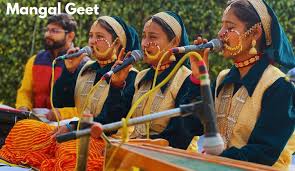
Maangal:
Maangal: The Auspicious Folk Song of Uttarakhand Maangal or Mangal is a significant and revered folk tradition from Uttarakhand, India, known for its association with auspicious occasions, particularly weddings. These songs, rich in cultural symbolism and rituals, are an integral part of the region’s celebrations
Traditional Jewellery of Uttarakhand
Uttarakhand’s traditional jewelry reflects the rich cultural heritage of the Garhwal and Kumaon regions. Known for its intricate designs and symbolic meanings, this jewelry includes pieces like the Tikka, Jhumka, Nath, and Payal, each representing beauty, status, and traditions. Worn during festivals, weddings, and daily life, these ornaments are a proud expression of the state’s unique customs and artistry.
Uttarakhand, with its serene landscapes and rich cultural heritage, is not only known for its temples and natural beauty but also for its vibrant traditional jewelry. The jewelry of Uttarakhand reflects the state’s deep-rooted customs, spiritual beliefs, and the distinct lifestyles of its people. Each region, whether Garhwal or Kumaon, carries its own unique designs and significance in the pieces worn, particularly by women. These traditional adornments are more than just ornamental; they serve as symbols of prosperity, beauty, and social status, connecting the people of Uttarakhand to their roots and traditions.
Uttarakhandi people love Jewellery as much as other Indians do. Uttarakhandi ornaments are solid, simple, and elegant. Uttarakhand has some really special pieces of jewelry, which are unique to it. Let’s have a look at some special pieces of Jewellery from Uttarakhand which will surely add a charm to your collection.
Bulaq
Bulaq is one of the most distinctive and iconic pieces of jewelry in Uttarakhand, deeply embedded in the cultural identity of the region. It is a traditional nose ornament worn in the septum of the nose, making it an unmistakable symbol of Uttarakhandi jewelry. Bulaq is typically long and made from gold, often embellished with various intricate motifs that reflect the artistry of the region’s skilled jewelers.
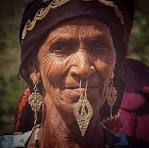
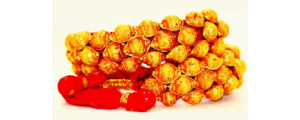
Pahunchi
Pahunchi is a traditional ornament that resembles a bracelet and holds significant cultural value in Uttarakhand. Worn primarily by Kumaoni women, though also seen among the Garhwali people, Pahunchi is typically adorned during auspicious occasions, festivals, and special celebrations. Its design is unique, reflecting the rich craftsmanship of the region
Hansuli
Hansuli is a traditional silver necklace that holds deep cultural significance among the women of Garhwali, Kumaoni, Jaunsari, and Bhotiya communities. Also known as Khagwali in Garhwali, this simple yet elegant piece of jewelry is typically worn around the neck during special occasions and festivals. The Hansuli is cherished for its understated beauty and is often passed down through generations, symbolizing both cultural pride and familial ties.
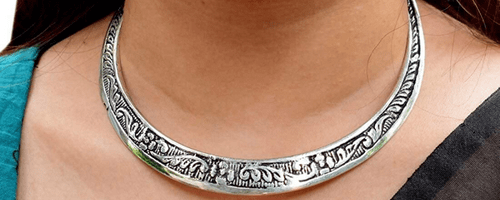
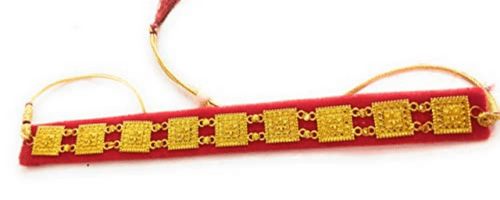
Galobandh
Galobandh is a traditional and unique necklace that holds great cultural significance in Uttarakhand, particularly within the Kumaoni, Garhwali, and Jaunsari communities. This striking piece of jewelry is worn around the neck and consists of intricately designed golden squares that are carefully studded onto a red cloth belt, held together with thread. The design is not only aesthetically pleasing but also reflects the region’s rich craftsmanship and cultural heritage.
Nathuli
Nathuli is a distinct and intricate nose ring that holds a prominent place in Uttarakhandi bridal jewelry. Made with a combination of gold and pearls, it is an exquisite ornament symbolizing both beauty and status. The Nathuli is divided into two parts—half of it is crafted from pearls, while the other half is made of gold. The number of pearls used in the design often signifies the status of the family, with wealthier families using more pearls to create an opulent look.

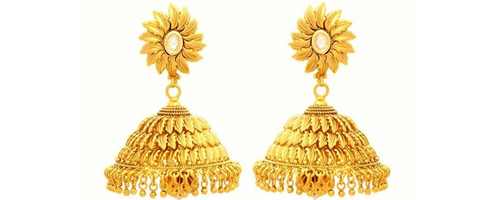
Karnaphool
Karnaphool is a stunning ear-shaped ornament that covers the entire ear. This traditional piece of jewelry is one of the most elaborate forms of earrings in Uttarakhand. Made from silver or gold, Karnaphool is often adorned with fine detailing and sometimes set with stones, adding an extra element of elegance. The design, resembling a flower (hence the name “phool”), is meant to enhance the beauty of the wearer and is often associated with wedding rituals and cultural festivals. It is a cherished part of the traditional jewelry set in Uttarakhand, symbolizing beauty, grace, and prosperity.
Chandrahar
Chandrahar is an exquisite necklace that holds significant cultural value in the traditional jewelry of Uttarakhand. Composed of multiple golden chains arranged consecutively, Chandrahar is adorned with golden flowers or kundan clasps that hold the chains together. The design of this necklace is inspired by the crescent moon, and its shape mimics the curves of the moon, which is why it is named Chandrahar or sometimes Chandroli, with “chandra” meaning “moon” in Hindi.
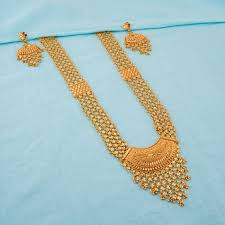
Dhaguli
Dhaguli are silver bangles traditionally worn by women in the Kumaon region of Uttarakhand. These bangles are often thick and heavy, designed with a simple yet elegant look. Dhaguli are worn in multiple sets, often in pairs or stacks, and are a staple of everyday wear. They are deeply ingrained in the cultural identity of the Kumaon region and hold significance as a symbol of womanhood, strength, and grace. The bangles are typically made from silver, reflecting the region’s heritage of silver craftsmanship, and are passed down through generations as family heirlooms. In traditional Kumaoni weddings, the bride may wear a special set of Dhaguli as a mark of her new life, making them an integral part of marriage rituals and celebrations.
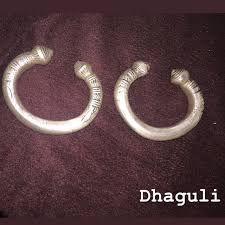
Tigdi or Kamarband
The Tigdi, also known as Kamarband, is a waist ornament that is worn by women in both Kumaon and Garhwal. The ornament can be found in two primary forms: one made from cloth and the other from silver, depending on the region and occasion. The cloth version is often simpler, made from braided or woven materials, while the silver version is more elaborate, featuring intricate designs and sometimes studded with small stones or embellishments.
